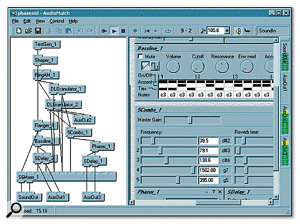

With this mechanism there is no queuing required. ASIO works using a single ping pong callback (called bufferSwitch) to process all inputs and outputs simultaneously.

On the other hand, in ASIO mode there is no queuing resulting in this whole process being synchronous. All of this is done on one thread and if any one of these queues can't keep up the audio will drop out. With 24 inputs the thread has to manage 24 queues being stoked in advance on each buffer processing cycle. When dealing with many input devices this overhead can add up.
#Sonar 8.5 dropouts driver#
SONAR queues up 8 record buffers in advance on each input and the audio thread keeps stoking the queue so that the driver always has buffers to fill in advance. It does this via Input Output Control's (IOCTL) to transition between user mode and kernel mode.
#Sonar 8.5 dropouts windows#
The driver, which takes advantage of the Windows Kernel Streaming architecture, uses a mechanism where inputs and outputs are handled as discrete objects that require a queue of buffers to be submitted to the driver to process.

There are some technical factors that should be considered when using this feature in the WDM/KS driver mode. It can be enabled by choosing Transport | Record Options and then placing a check in the box next to "Allow Arm Changes During Playback/Record" By default this feature is disabled in SONAR. This occurs behind the scenes so that when you actually arm a track for recording it is done dynamically, meaning it doesn't require a gap while the device is pre-rolled. What dynamic arm basically does is pre-initializes all devices that you have enabled in SONAR's Audio Options dialog for actively reading data from the inputs even when you are not recording and are just playing your project. SONAR 8 includes a new feature called Dynamic Arm. The information in this article applies to: Dynamic Arm Performance in SONAR Last updated on


 0 kommentar(er)
0 kommentar(er)
